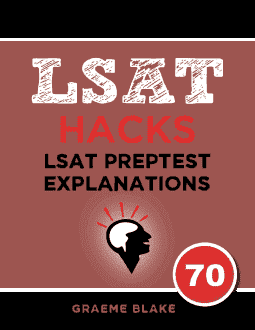When a question gives you a new rule, there is always a way to combine that rule with one of the existing rules. To do this effectively, you should have the regular rules memorized.
When you have all the rules in your head, it’s much easier to combine them.
This question says that terns are lectured on in H. Here are the existing rules that relate to that:
- Sandpipers are lectured on in H (rule 4).
- Only two lectures are H (rule 3).
- One of the H lectures is fourth (rule 2).
Whew, there are quite a few involved in this question. Let’s go through step by step.
There are two Hs. For this question, S and T are the lectures that take place in H.
Since one of the Hs is fourth, that means that one of S and T will be fourth. Whenever there are only two possibilities, you can split things up into two scenarios. Separate scenarios will let you get more deductions:


This may seem a lengthy process when I explain it. But it actually takes longer to explain than to draw. Success at logic games comes from experience.
A skilled student of logic games can get the two scenarios above with 5-10 seconds of drawing and deductions.
Likewise, a skilled student will make all the deductions I’m about to walk you through, and they’ll make them very quickly. If you move on without understanding this question intuitively, then you won’t learn that skill. Keep practicing questions like this until they’re second nature. Draw the diagrams on your own, too.
Ok, so we made two scenarios, with T and S fourth. Other rules mention those birds. T is before P, and S is before O. (rules 4 and 5)


In both cases, the fifth lecture takes place in Gladwyn Hall. This is because on this question, S and T are the lectures that take place in Howard Auditorium. (Also, rule 5 says that P takes place in Gladwyn Hall)
Ok, so now we have to place T in the first diagram, and S in the second. S and T both take place in H, so they can’t go first. And they both have something after them, so they can’t go third. Therefore they each go second:


The next step would be placing R first in both diagrams. I left that off to make the previous step easier to follow.
A is CORRECT. In the second diagram, O is third and is in Gladwyn Hall.
These dual scenario deductions are a very common pattern for some “could be true” and “must be true” questions. The question can be split into two scenarios. When you fill them both out, you’ll then see what can be true in both diagrams, and what must be true in both.
As I said, you can get quite fast at this with practice. The alternative is trial and error. That can be a perfectly acceptable method. You can get lucky, try A, and see that it’s the right answer. But the problem with trial and error is that you don’t usually know where to start, and you may have to try every answer.


Leave a Reply